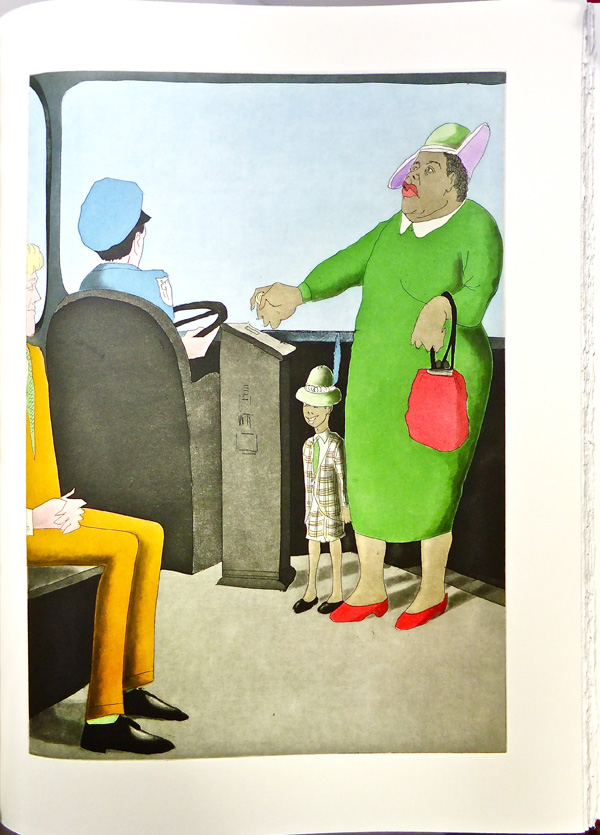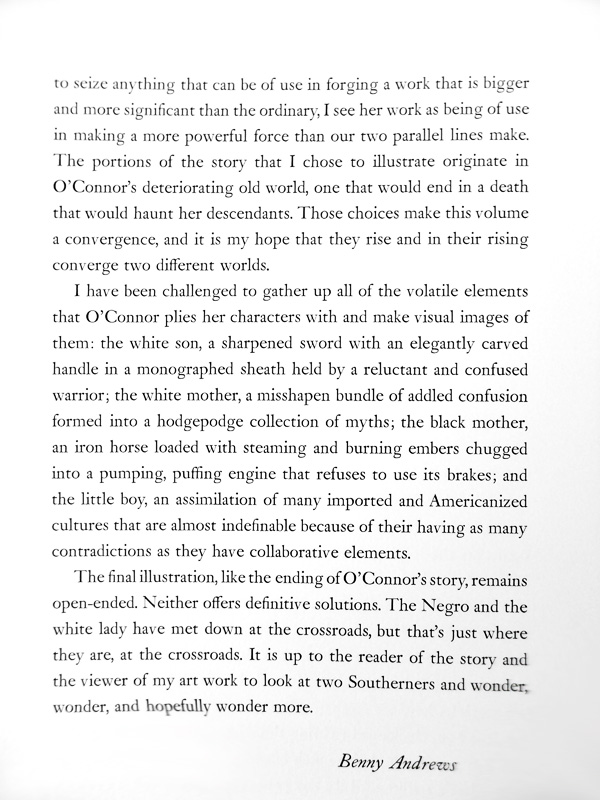
Her doctor had told Julian’s mother that she must lose
twenty pounds on account of her blood pressure, so on. Wednesday nights Julian had to take her downtown on the bus for a reducing class at the Y. The reducing class was designed for working girls over fifty, who weighed from 165 to 200 pounds. His mother was one of the slimmer ones, but she said ladies did not tell their age or their weight. She would not ride the buses by herself at night since they had been integrated . . . Flannery O’Connor. 1961
So begins O’Connor’s shivery story set in the mid 20th century South that the celebrated artist, Benny Andrews, knew all too well. The two lived only thirty miles from one another, but worlds and worlds apart, in Georgia farm country. Why he chose this book, this author, he will tell you in his brilliant Afterword.
The white O’Connor flourished within the system. Andrews, a son of black sharecroppers, flourished in spite of it. Imagine. School, for him, was permitted only when it was too wet to work the fields. High school was a four-mile walk each way. With only determination, wit, desperation and genius he cobbled together scholarships for college.
His passion, vision and talent have earned a place for his art in all major New York museums, including the august Metropolitan Museum.
- One volume, 17 x 22 inches
- Six color etchings by Benny Andrews
- Edition limited to three hundred numbered copies
- Newsletter
- Each book signed by Benny Andrews
Peter Pettengill made the plates and editioned the prints at his Wingate Studios in New Hampshire. Red Japanese linen, the color of Georgia clay, covers the hand-sewn, hand-bound books and the hinged and lined cases. 2005. $ 2,950

Page 1

“She was almost ready to go, standing before the hall mirror, putting on her hat . . . “

Andrews’ Afterword – page 1

” . . . a large, gaily dressed, sullen-looking colored woman got on with a little boy.”

Andrews’ Afterword – page 2

“The vision of two hats, identical, broke upon him with the radiance of a brilliant sunrise.”

Andrews’ Afterword – page 3

“The huge woman turned and for a moment stood, her shoulders lifted and her face frozen with frustrated rage . . . “

Andrews’ Afterword – page 4

Colophon Page

Newsletter

Book and Case